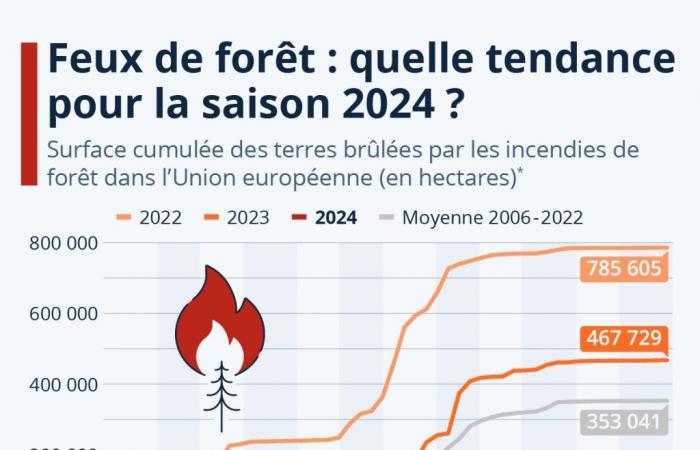The number and intensity of megaforest fires, that is to say the most extreme and destructive fires, have doubled worldwide since the beginning of the twenty-first century, mainly due to global warming due to human activity, according to a study published Monday June 24, 2024 in the scientific journal Nature Ecology & Evolution. Using satellite data, the team of researchers analyzed nearly 3,000 forest fires that had enormous “radiative power” between 2003 and 2023. They found that the frequency of such events increased by 2.2 to globally during this period, and that the last seven years had recorded the six most extreme fires measured. In detail, it is the temperate and boreal forests, particularly in North America and Siberia, which are the most affected, with certain forests in these regions having seen the frequency of megafires increase tenfold in the space of twenty years. .
Following the forest fires that ravaged Europe in 2022 and 2023, European Union (EU) countries have strengthened their firefighting capabilities this year, in order to better protect populations and the environment. which surrounds them. The EU has notably formed a team of 556 firefighters from twelve countries, which will be deployed in high-risk areas, such as France, Greece, Portugal and Spain.
As data from the European Forest Fire Information System (EFFIS) shown in our infographic shows, although it is only just beginning, the EU forest fire season appears, for the moment, to be following suit. the average trend recorded from 2006 to 2023. The cumulative area of forest destroyed by fires in the EU from January 1 to June 23, 2024 was approximately 75,000 hectares. In comparison, in 2022 and 2023, among the worst years recorded in the EU, some 320,000 hectares and 120,000 hectares had respectively burned by the same date. As the curves in our infographic suggest, fire risk is inevitably expected to increase in the coming weeks, with the fire season typically peaking in the Northern Hemisphere between late July and early August.






